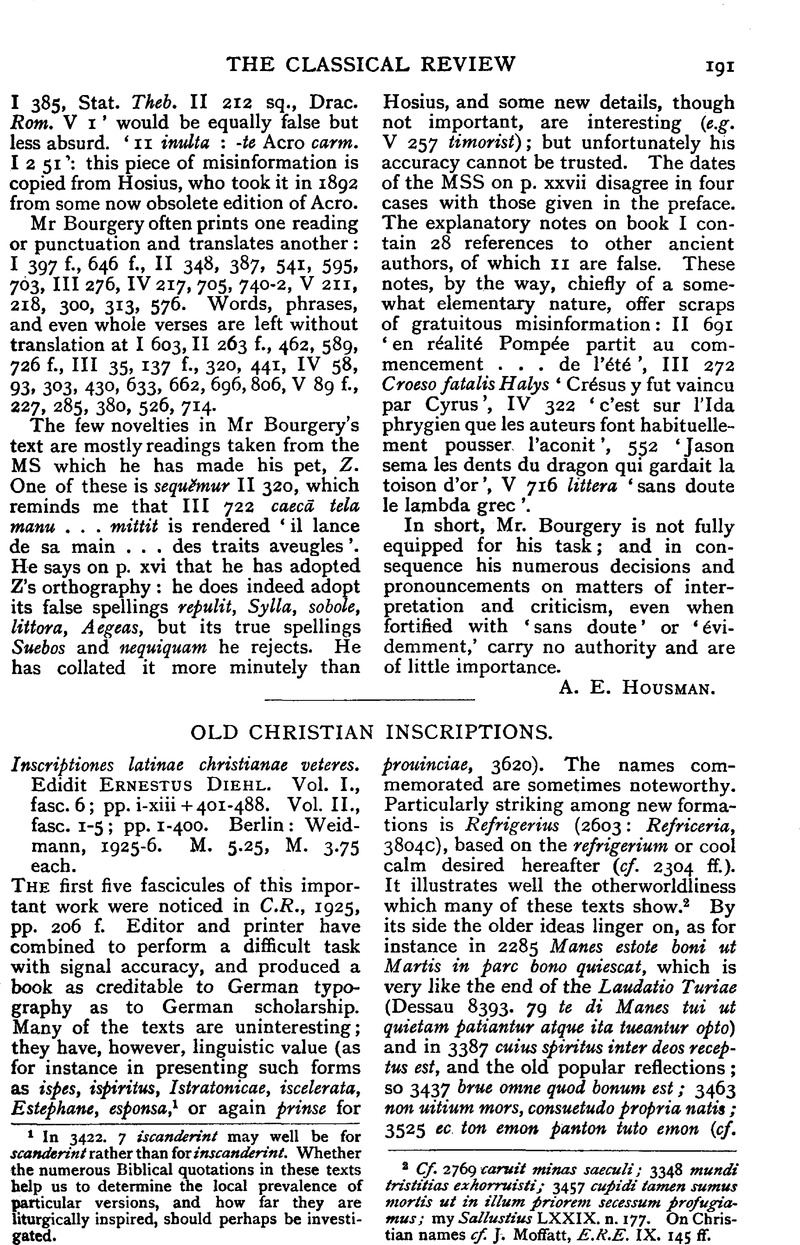No CrossRef data available.
Article contents
Old Christian Inscriptions - Inscriptiones latinae christianae veteres. Edidit Ernestus Diehl. Vol. I., fasc. 6; pp. i-xiii + 401–488. Vol. II., fasc. 1–5; pp. 1–400. Berlin: Weidmann, 1925–1926. M. 5.25, M. 3.75 each.
Published online by Cambridge University Press: 27 October 2009
Abstract

- Type
- Reviews
- Information
- Copyright
- Copyright © The Classical Association 1927
References
page 191 note 1 In 3422. 7 iscanderint may well be for scanderint rather than for inscanderint. Whether the numerous Biblical quotations in these texts help us to determine the local prevalence of particular versions, and how far they are liturgically inspired, should perhaps be investigated.
page 191 note 2 Cf. 2769 caruit minas saeculi; 3348 mundi tristitias exhorruisti; 3457 cupidi tamen sumus mortis ut in ilium priorem secessum profugiamus; my Sallustius LXXIX. n. 177. On Christian names cf. Moffatt, J., E.R.E. IX. 145 ff.Google Scholar
page 192 note 1 Cf. P. Perdrizet, Bull. soc. ant. France, 1903, 164 ff. The Latin proverb eum peius formidant quant fullones ululam (Varro, Men. 539 Buech., used in jest at Pompeii, Notizie degli scavi, 1884, 50, 111; 1913, 147 = C.L.E. 1936 Lommatzsch) has a double point; the ulula is a bird of ill omen, and it is specially connected with the fullers, as both are under Minerva's protection (cf. a Pompeian painting of the fuller's Quinquatrus with owls perched on their apparatus; Dar.-Saglio, Dict. II. 1350, Fig. 3302); there may be an allusion to the night work of the fullers (Titin. Com. 27 nec noctu nec diu licet fullonibus qutescere) and their pallor, comically interpreted as due to fear of their characteristic bird.
page 192 note 2 Hibbert Journal, V. (1907), 847 f.




